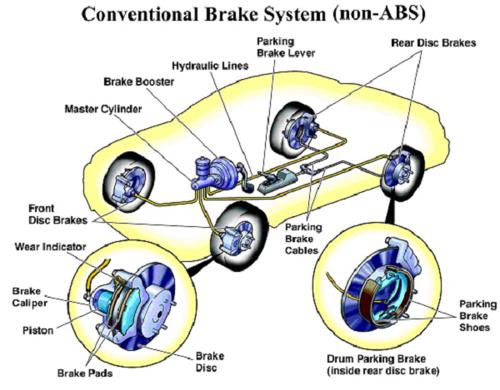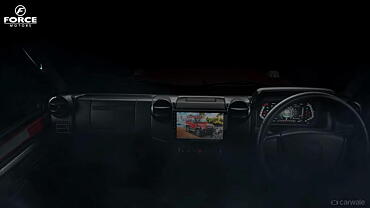When it comes to cars in India, sharp brakes are said to rank second only to a loud horn on the top things that drivers long to have. Consider it the perils of driving around in our chaotic environment, but without these two, life behind the wheel would be extremely miserable, not to mention hair-raising on occasion.

Brake systems have come a long way in the past couple of decades and these days, there are enough performance oriented cars that come with ceramic and other exotic brake pad materials. But the basic mechanics of how your car brakes work has remained fairly consistent over time.
Modern cars have something called a hydraulic braking system. Here, the brake pedal is linked to a master-cylinder & booster that’s usually located on the fire-wall. The force exerted on the brake pedal, acts on the hydraulic fluid and gets multiplied via the master-cylinder & booster kit. This is then transferred to hydraulically operated pistons located in the brake assembly at each wheel. The pistons exert pressure on the brake pads (in the case of disc brakes) and brake shoes (used in drum brakes), thereby slowing down the vehicle & bringing it to a stop.
As automotive technology advanced, people began to realize that braking efficiency was linked to a host of factors. The tires one used on the car, including the compound used in the construction to the size and width were all important. Then there were drum brakes & disc brakes. While cars in India continue to use drum brakes at the rear, even to this day (citing affordability), it is heartening to see manufacturers shifting to an all-disc system.
Changing regulations and increasing awareness from consumers on how your car brakes work, and their correlation to road-safety are quickening the move to anti-lock braking systems as a commonly offered feature. The way ABS works in theory is that it regulates brake force to each wheel in such a way that there’s just enough to slow down the vehicle, and preventing the wheel from skidding.
A series of sensors monitor the wheel speed at all times. When the system detects that a particular wheel (or wheels) are braking traction, it then activates a series of valves. These valves control the flow of hydraulic fluid and in turn, the braking duration/force that is applied to the wheel (s) in question. The biggest advantage of ABS is that it reduces braking distances and enables steering control at all times.



























